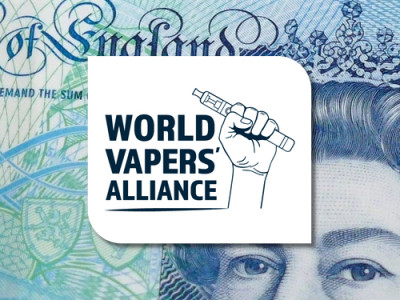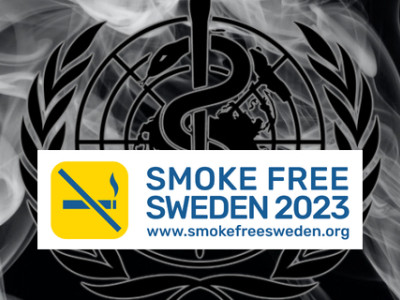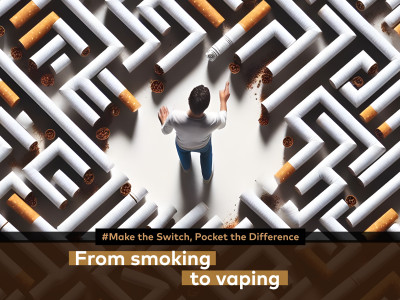This month, UKECRF published analysis of three studies. The first focused on the cardiovascular effects of e-cigarettes by researchers at the University of Dundee, the second is a small observational study conducted by researchers at London South Bank University, and the last is a systematic review addressing the influence of social factors on e-cigarette intentions and use.
For “Cardiovascular Effects of Switching From Tobacco Cigarettes to Electronic Cigarettes”, researchers recruited 114 smokers to see if there were measurable health benefits in blood flow from the heart to other tissues and organs as a result of switching to vaping.
“At one month follow up, the researchers found a significant improvement … among participants who vaped (the nicotine and nicotine free groups combined) compared to those who continued to smoke.”
For “Effects of e-cigarettes versus nicotine replacement therapy on short-term smoking abstinence when delivered at a community pharmacy”, researchers tested the effectiveness of offering an e-cigarette with and without nicotine replacement therapy on 4-6-week quit rates in adult smokers seeking support from a community pharmacy.
They looked at 115 smokers, of which 37 choose to switch to vaping; “Smokers who chose an e-cigarette either alone or with NRT were more likely to have stopped smoking at four weeks”.
UKECRF said: “Although this study was small, the fact that participants selected which product rather than being randomised, and that validated (CO) quit rates were not available or reported for all participants, it still contains useful information that could inform future studies.”
The final study, “Social Influence in the Uptake and Use of Electronic Cigarettes: A Systematic Review” warned: “Given the increased popularity among non-smokers and the potential for advertising to increase e-cigarette use, closer public health monitoring of e-cigarette uptake by non-smokers is warranted. Future primary research should be designed to measure how social factors affect smokers and non-smokers differently.”
The experts reviewing the paper said: “This review is vulnerable to any limitations of the individual studies included. There was no indication of how well studies adjusted for confounding factors. Therefore, this review cannot establish causal relationships.
Although the risk of bias was assessed in randomised control trials, 81% of the studies were not RCTs. A quality validation tool was not used to assess the quality of all studies meaning the quality was not weighted in the analysis. Due to heterogeneity in the data, a meta-analysis was not performed. Therefore, common effects of the studies cannot be statistically verified.”
The UKECRF suggested that people interested in vape research might wish to look at the following studies from the end of 2019:
Patterns of Use
- Electronic cigarette use among heart failure patients: Findings from the Population Assessment of Tobacco and Health study (Wave 1: 2013-2014).
- Investigating E-cigarette Particle Emissions and Human Airway Depositions under Various E-cigarette Use Conditions.
- The Prevalence of Tobacco and E-Cigarette Use in Poland: A 2019 Nationwide Cross-Sectional Survey.
- Adult use of and transitions from nicotine and non-nicotine containing e-cigarettes: Data from the Population Assessment of Tobacco and Health (PATH) Study, 2013-2016.
- E-Liquid Flavor Preferences and Individual Factors Related to Vaping: A Survey among Dutch Never-Users, Smokers, Dual Users, and Exclusive Vapers.
- Socioeconomic Inequalities in e-Cigarette Use in Korea: Comparison with Inequalities in Conventional Cigarette Use Using Two National Surveys.
- Smokers with pain are more likely to report use of e-cigarettes and other nicotine products.
- Use of Electronic Cigarettes with Conventional Tobacco Is Associated with Decreased Sleep Quality in Women.
Perceptions
- Social norms towards smoking and vaping and associations with product use among youth in England, Canada, and the US.
- Rural-urban differences e-cigarette ever use, the perception of harm, and e-cigarette information seeking behaviors among U.S. adults in a nationally representative study.
- Social Influence in the Uptake and Use of Electronic Cigarettes: A Systematic Review.
- Adults' favorability toward prohibiting flavors in all tobacco products in the United States.
- Baseline assessment of noticing e-cigarette health warnings among youth and young adults in the United States, Canada and England, and associations with harm perceptions, nicotine awareness and warning recall.
- Mental health professionals' perceptions, judgements and decision-making practices regarding the use of electronic cigarettes as a tobacco harm reduction intervention in mental healthcare: A qualitative focus group study.
Cessation
- Real-world effectiveness of smoking cessation strategies for young and older adults: Findings from a nationally representative cohort.
- E-cigarettes and Smoking Cessation in Smokers With Chronic Conditions.
- Effects of e-cigarettes versus nicotine replacement therapy on short-term smoking abstinence when delivered at a community pharmacy.
Youth Use
- Determinants of e-cigarette use among a sample of high school students in Jakarta, Indonesia.
- Patterns and trends of dual use of e-cigarettes and cigarettes among U.S. adults, 2015-2018.
- JUUL in school: JUUL electronic cigarette use patterns, reasons for use, and social normative perceptions among college student ever users.
- The role of flavors in vaping initiation and satisfaction among U.S. adults.
- A qualitative study of e-cigarette emergence and the potential for renormalisation of smoking in UK youth.
- Prevalence of tobacco smoking and electronic cigarette use among adolescents in Italy: Global Youth Tobacco Surveys (GYTS), 2010, 2014, 2018.
Harms and Harm Reduction
- Microbial Toxins in Nicotine Vaping Liquids.
- E-cigarette vapor exposure alters Streptococcus pneumoniae transcriptome in a nicotine-dependent manner without affecting pneumococcal virulence.
- Evaluation of Second-Hand Exposure to Electronic Cigarette Vaping under a Real Scenario: Measurements of Ultrafine Particle Number Concentration and Size Distribution and Comparison with Traditional Tobacco Smoke.
- Carbon monoxide concentration in mainstream E-cigarette emissions measured with diode laser spectroscopy.
- Analysis of Toxic Metals in Liquid from Electronic Cigarettes.
- Nicotine e-cigarette vapor inhalation effects on nicotine & cotinine plasma levels and somatic withdrawal signs in adult male Wistar rats.
- Quantification of selected aroma compounds in e-cigarette products and toxicity evaluation in HUVEC/Tert2 cells.
- Short halt in vaping modifies cardio-respiratory parameters and urine metabolome: a randomized trial.
- Short-term e-cigarette vapour exposure causes vascular oxidative stress and dysfunction: evidence for a close connection to brain damage and a key role of the phagocytic NADPH oxidase (NOX-2).
- Chronic E-Cigarette Use Increases Neutrophil Elastase and Matrix Metalloprotease Levels in the Lung.
Marketing
Misc
- Association Between e-Cigarette Use and Depression in the Behavioral Risk Factor Surveillance System, 2016-2017.
- Characterization of Nicotine Salts in 23 Electronic Cigarette Refill Liquids.
- Vitamin E acetate is not present in licit e-cigarette products available on the UK market.
- Single- and cross-commodity delay discounting of money and e-cigarette liquid in experienced e-cigarette users.
- Impact of Vaping Regimens on Electronic Cigarette Efficiency.
- Effect of e-cigarette flavors on nicotine delivery and puffing topography: results from a randomized clinical trial of daily smokers.
- Comparison of monoamine oxidase inhibition by cigarettes and modified risk tobacco products.
- Policy Debates Regarding Nicotine Vaping Products in Australia: A Qualitative Analysis of Submissions to a Government Inquiry from Health and Medical Organisations.
- Topic Clustering of E-Cigarette Submissions Among Reddit Communities: A Network Perspective.
- Combining Crowd-Sourcing and Automated Content Methods to Improve Estimates of Overall Media Coverage: Theme Mentions in E-cigarette and Other Tobacco Coverage.
- E-liquid-related posts to Twitter in 2018: Thematic analysis.
Related:
- UKECRF – [link]
- “Cardiovascular Effects of Switching From Tobacco Cigarettes to Electronic Cigarettes” by George et al. – [link]
- “Effects of e-cigarettes versus nicotine replacement therapy on short-term smoking abstinence when delivered at a community pharmacy” by Cox et al. – [link]
- “Social Influence in the Uptake and Use of Electronic Cigarettes: A Systematic Review” by Amin et al. – [link]
Dave Cross
Journalist at POTVDave is a freelance writer; with articles on music, motorbikes, football, pop-science, vaping and tobacco harm reduction in Sounds, Melody Maker, UBG, AWoL, Bike, When Saturday Comes, Vape News Magazine, and syndicated across the Johnston Press group. He was published in an anthology of “Greatest Football Writing”, but still believes this was a mistake. Dave contributes sketches to comedy shows and used to co-host a radio sketch show. He’s worked with numerous vape companies to develop content for their websites.
Join the discussion
Harm Reduction For The Rich
The United Kingdom risks becoming a harm reduction country only for the wealthy, according to Michael Landl of the World Vapers’ Alliance
CAPHRA Highlights Tobacco Control Flaws
The Coalition of Asia Pacific Tobacco Harm Reduction Advocates highlights the flaws in tobacco control which has led to the rise of black market in Australia
A Missed Opportunity at COP10
The Smoke Free Sweden movement says that COP10 was a missed opportunity to save millions of lives
COP10: Promote Tobacco Harm Reduction
Experts with Smoke Free Sweden are emphasising the urgent need for a Tobacco Harm Reduction approach at COP10












